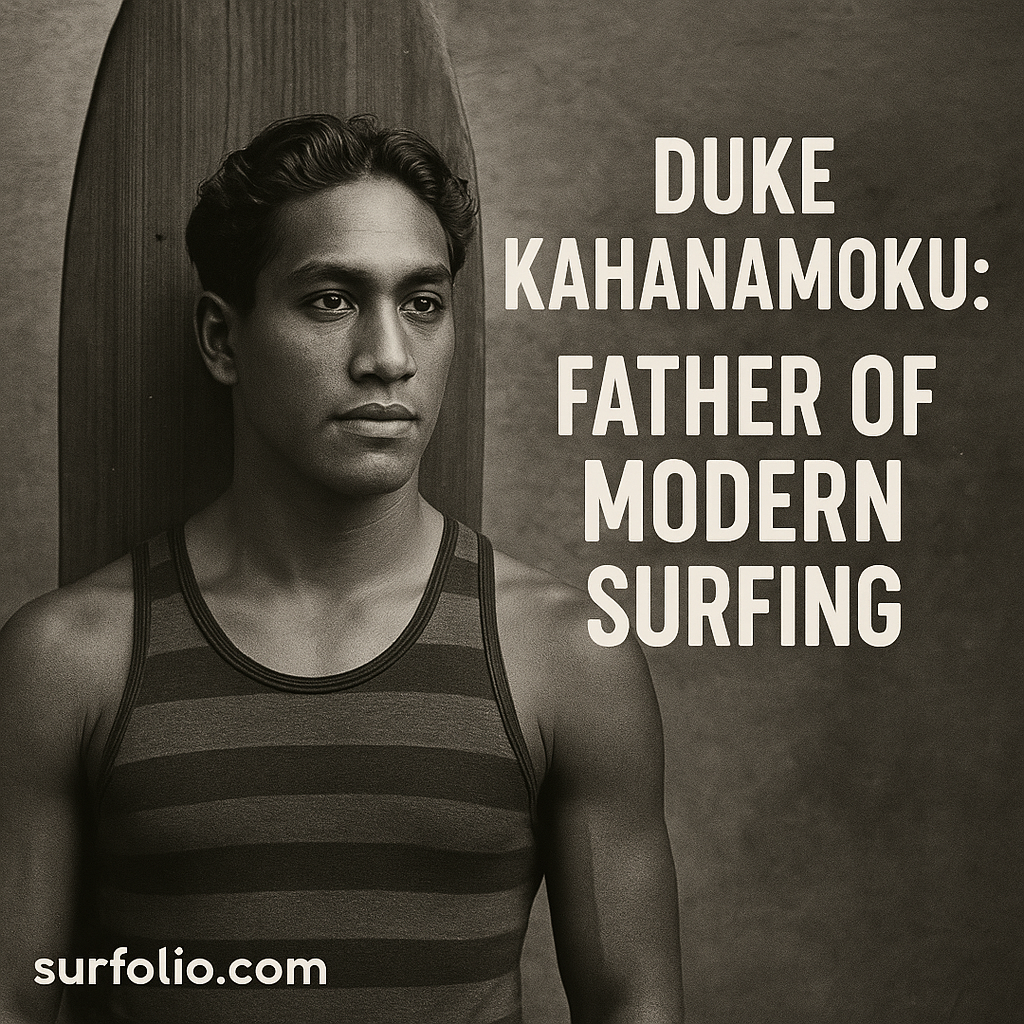
Before surfing became a global sport, it was a sacred Hawaiian tradition—and one man carried it across the world. Duke Kahanamoku, born in Honolulu in 1890, wasn’t just a champion athlete—he was an ambassador of aloha, a hero in and out of the water, and the man who brought surfing to the international stage. His influence can still be felt in every wave ridden today.
Early Life: A Hawaiian Waterman
Duke Paoa Kahanamoku was born into a deeply rooted Hawaiian family, raised near Waikiki Beach. From a young age, the ocean was his playground, classroom, and source of identity. He mastered swimming, diving, and bodysurfing before shaping his first wooden surfboard—a massive 16-foot board made from koa wood that weighed nearly 120 pounds.
In a time when surfing had nearly vanished under colonial influence, Duke helped preserve and revive the Hawaiian art of heʻe nalu (wave sliding).
Olympic Champion and Global Ambassador
Duke’s athleticism soon carried him beyond the islands. In 1912, he represented the United States at the Stockholm Olympics, winning a gold medal in the 100-meter freestyle and a silver in the relay. He went on to compete in three more Olympics, earning five medals in total and setting multiple world records.
But Duke’s legacy extended far beyond swimming. Wherever he traveled, he brought his surfboard—and his love for the ocean. From California to Australia, he introduced surfing to new shores, captivating crowds with his grace and skill.
Spreading the Spirit of Surfing
When Duke first surfed in Sydney’s Freshwater Beach in 1914, he changed history. His effortless rides mesmerized onlookers and inspired a new generation of Australian surfers. He later performed similar demonstrations in California, New Zealand, and along the U.S. East Coast.
Through his humility, warmth, and athletic brilliance, Duke showed the world that surfing wasn’t just a sport—it was a lifestyle, a spiritual connection to the sea.
The True Meaning of Aloha
More than medals or records, Duke’s greatest legacy was the spirit he carried. He embodied aloha—kindness, humility, and respect. Despite fame, he remained gentle and gracious, using his platform to bridge cultures and spread goodwill.
His calm presence and open heart earned him admiration far beyond the surf world. In later years, he served as Sheriff of Honolulu for nearly 30 years, continuing his lifelong service to his community.
Legacy and Honors
Duke Kahanamoku’s impact lives on through surfing’s global popularity and the cultural pride he restored to Hawaii. His statue at Waikiki Beach, standing tall with open arms and leis, welcomes surfers from around the world.
His legacy includes:
- Induction into the Swimming and Surfing Halls of Fame
- The Duke’s OceanFest, an annual celebration of surf and ocean sports in Honolulu
- The Duke Kahanamoku Foundation, supporting youth sports and scholarships
- Countless surfers who see him as the original inspiration for modern wave riding
Final Thoughts
Duke Kahanamoku wasn’t just the Father of Modern Surfing—he was the embodiment of surfing’s soul. He shared Hawaii’s ocean culture with the world through kindness, passion, and humility.
When you paddle out today, you’re part of Duke’s legacy—riding the same waves of aloha that he carried across the globe over a century ago.
